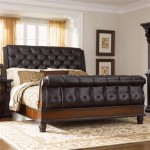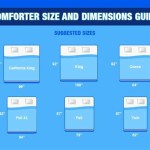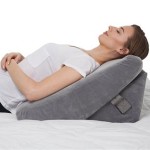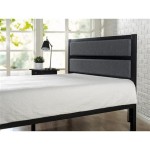How Many Yards of Fabric For A Queen Bed Skirt?
A bed skirt, also known as a dust ruffle, is a decorative and functional element that adds a touch of elegance and refinement to any bedroom. It conceals the box spring and bed frame while providing a polished look to the overall bed ensemble. When embarking on a DIY bed skirt project, determining the proper amount of fabric is crucial for ensuring a successful outcome. The quantity of fabric needed will depend on the size of the bed, the desired length of the skirt, and the type of ruffles or pleats incorporated into the design.
A queen-size bed, typically measuring 60 inches wide by 80 inches long, requires a specific amount of fabric to create a bed skirt that drapes beautifully and complements the bed's dimensions. This article will provide a comprehensive guide to calculating the fabric yardage for a queen bed skirt, taking into consideration various factors that influence fabric consumption.
Understanding Fabric Yardage Factors
Several factors influence the amount of fabric required for a queen bed skirt. These factors include:
- Desired length: The length of the bed skirt determines how much fabric will be needed. A longer skirt requires more fabric than a shorter one.
- Type of ruffles or pleats: Ruffles and pleats add volume and visual interest to the bed skirt, but they also increase the fabric consumption. The more gathers or pleats you include, the more fabric you will need.
- Fabric width: The width of the fabric plays a significant role in determining the yardage needed. Wider fabric will require fewer yards to achieve the desired width of the bed skirt.
- Drop length: The drop length refers to the distance the bed skirt hangs below the box spring. A longer drop length requires more fabric.
Calculating Fabric Yardage for a Queen Bed Skirt
Follow these steps to accurately calculate the fabric yardage for a queen bed skirt:
- Determine the desired drop length: Decide how far the bed skirt should hang below the box spring. A standard drop length is typically 14 to 16 inches, but you can adjust this based on personal preference.
- Measure the bed's width: The width of a queen-size bed is usually 60 inches, but it's best to measure your specific bed for accuracy.
- Account for the bed frame: If your bed frame has a wide headboard or footboard, add an additional 4 to 6 inches to the width measurement to accommodate the frame's width.
- Calculate the total width: Multiply the bed's width by 2 to account for the front and back panels of the skirt. For example, if the bed width is 60 inches, the total width would be 120 inches.
- Determine the ruffles or pleats: If you plan to add ruffles or pleats, estimate how many inches of fabric you'll need to achieve the desired fullness. A general rule of thumb is to add 2 to 3 times the original width of the skirt for ruffles.
- Add the desired drop length: Add your chosen drop length to the total width calculated in step 4. For instance, if the total width is 120 inches and the drop length is 14 inches, the total length would be 134 inches.
- Calculate the fabric yardage: Divide the total length by the fabric width to determine the number of yards needed. For example, if the fabric width is 45 inches, you would need 134 inches / 45 inches = 2.98 yards of fabric. Round this number up to 3 yards to ensure you have enough fabric.
Tips for Fabric Selection and Calculation
Consider these tips for selecting and calculating fabric yardage for a queen bed skirt:
- Choose durable and wrinkle-resistant fabric: Bed skirts are frequently laundered, so select a fabric that can withstand repeated washings and maintain its appearance.
- Factor in seam allowances: Remember to add seam allowances to your calculations. A standard seam allowance is 1/2 inch, which should be added to all sides of the skirt panels.
- Purchase extra fabric: It's always wise to purchase a bit more fabric than you need, especially if you are a beginner sewer. This allows for mistakes, adjustments, or potential shrinkage during washing.
- Consider fabric width: Wider fabric requires fewer yards, making it a more economical choice.
- Experiment with patterns and designs: Create a unique and stylish bed skirt by incorporating different patterns, colors, and textures. Explore the endless possibilities of fabric design and embellishments to personalize your bedroom's decor.

How To Make A Diy Bed Skirt Easy Ideas For Metal Frame Bloom

Yardage Chart For New York Upholstery Re Custom Slipcovers And More Bettertex Interiors

Bed Skirt Chart Fabric Resource

How To Make A Tailored Bed Skirt Kim S Upholstery

Diy Gathered Bed Skirt From A Drop Cloth Tidbits

Quick And Easy Bed Skirt

How To Make Bed Skirts

Easiest Diy Bed Skirt With Box Pleats Nourish And Nestle

How To Make A Diy Bed Skirt Easy Ideas For Metal Frame Bloom

Mel Liza Sewing A Box Pleated Bedskirt
Related Posts







